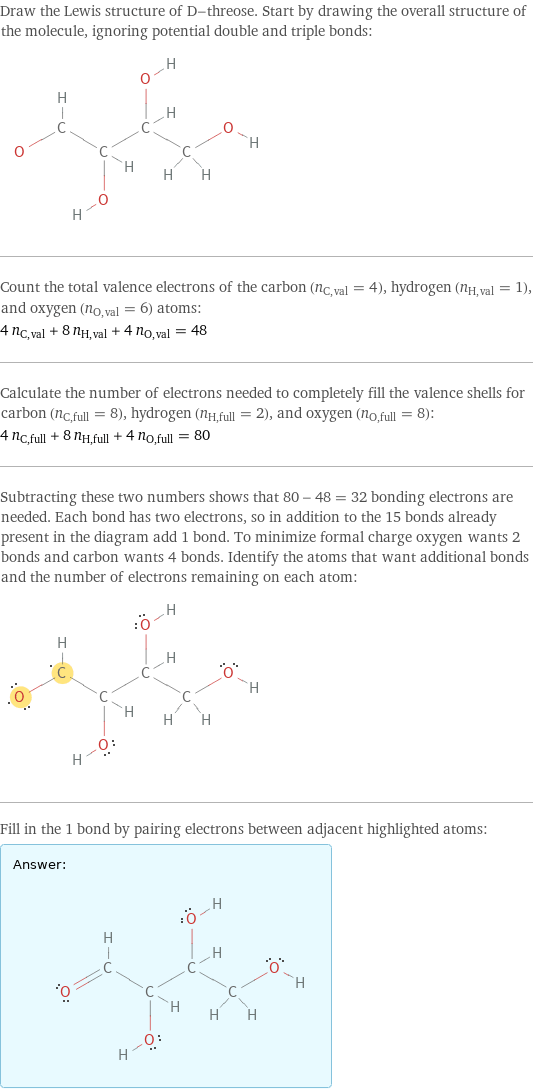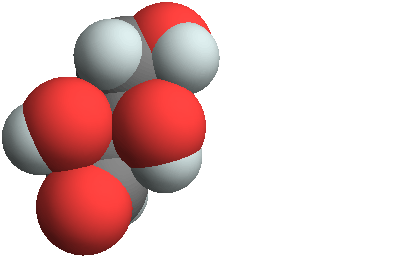Input interpretation

D-threose
Chemical names and formulas

formula | C_4H_8O_4 name | D-threose alternate names | D-(-)-threose | (-)-threose | (2S, 3R)-2, 3, 4-trihydroxybutanal | D-threo-tetrose mass fractions | C (carbon) 40% | H (hydrogen) 6.71% | O (oxygen) 53.3%
Lewis structure

Draw the Lewis structure of D-threose. Start by drawing the overall structure of the molecule, ignoring potential double and triple bonds: Count the total valence electrons of the carbon (n_C, val = 4), hydrogen (n_H, val = 1), and oxygen (n_O, val = 6) atoms: 4 n_C, val + 8 n_H, val + 4 n_O, val = 48 Calculate the number of electrons needed to completely fill the valence shells for carbon (n_C, full = 8), hydrogen (n_H, full = 2), and oxygen (n_O, full = 8): 4 n_C, full + 8 n_H, full + 4 n_O, full = 80 Subtracting these two numbers shows that 80 - 48 = 32 bonding electrons are needed. Each bond has two electrons, so in addition to the 15 bonds already present in the diagram add 1 bond. To minimize formal charge oxygen wants 2 bonds and carbon wants 4 bonds. Identify the atoms that want additional bonds and the number of electrons remaining on each atom: Fill in the 1 bond by pairing electrons between adjacent highlighted atoms: Answer: | |
3D structure

3D structure
Basic properties

molar mass | 120.1 g/mol
Units

Chemical identifiers

CAS number | 95-43-2 PubChem CID number | 439665 SMILES identifier | C(C(C(C=O)O)O)O